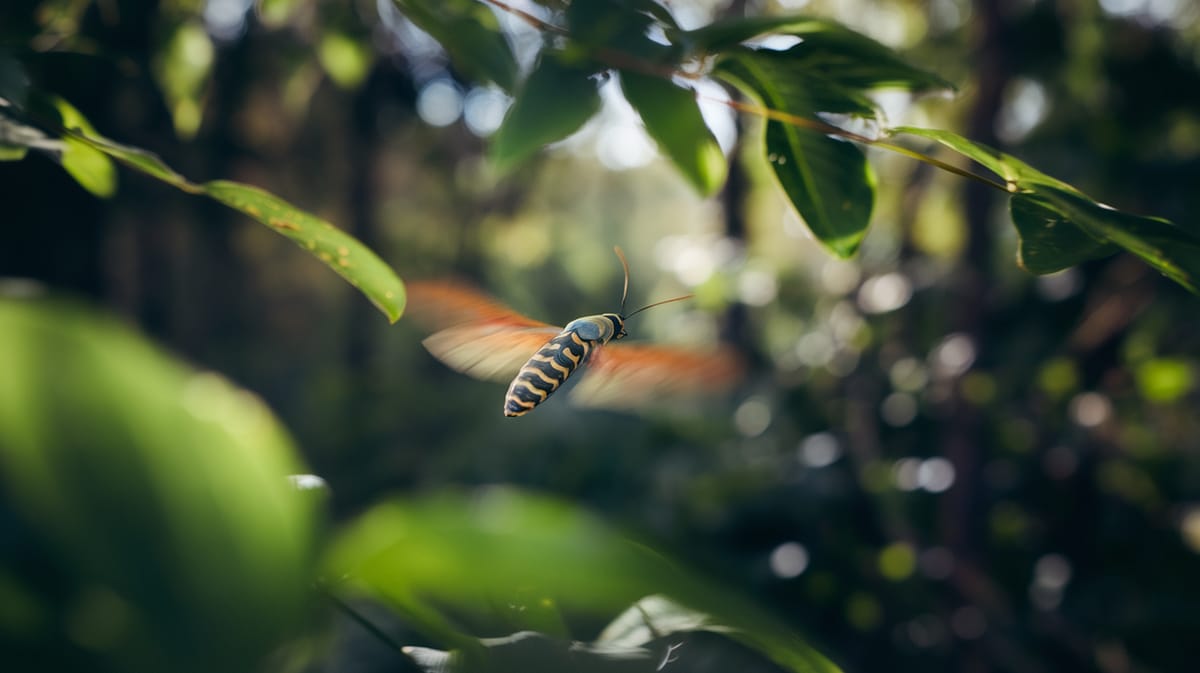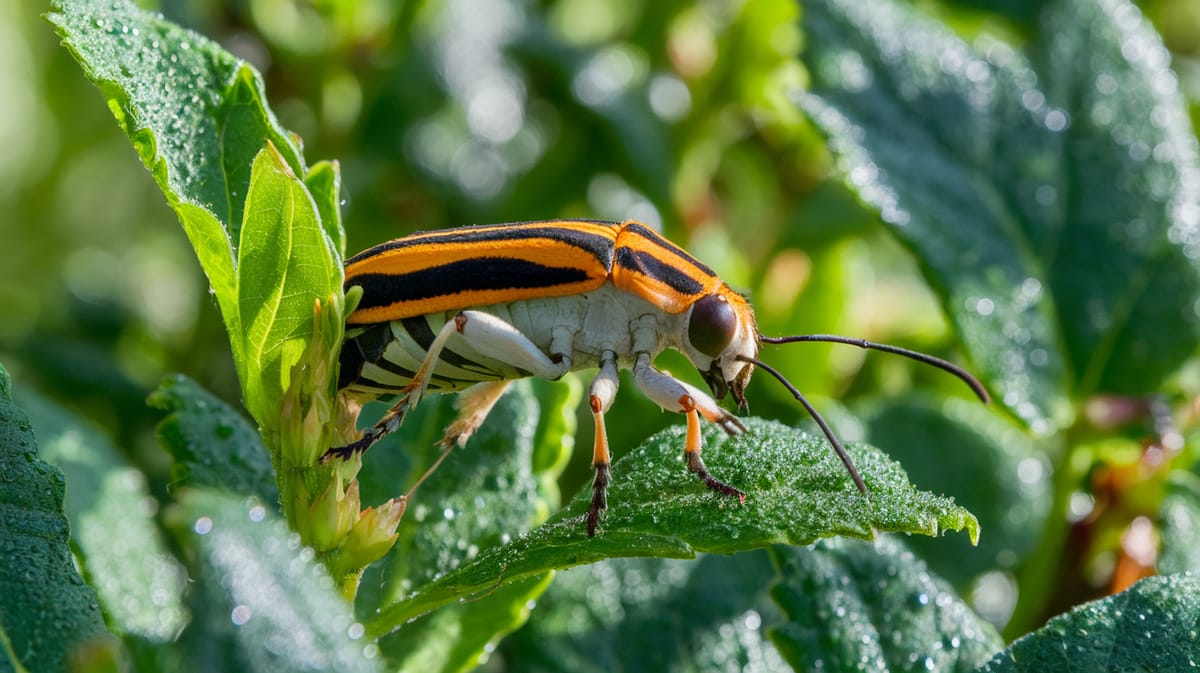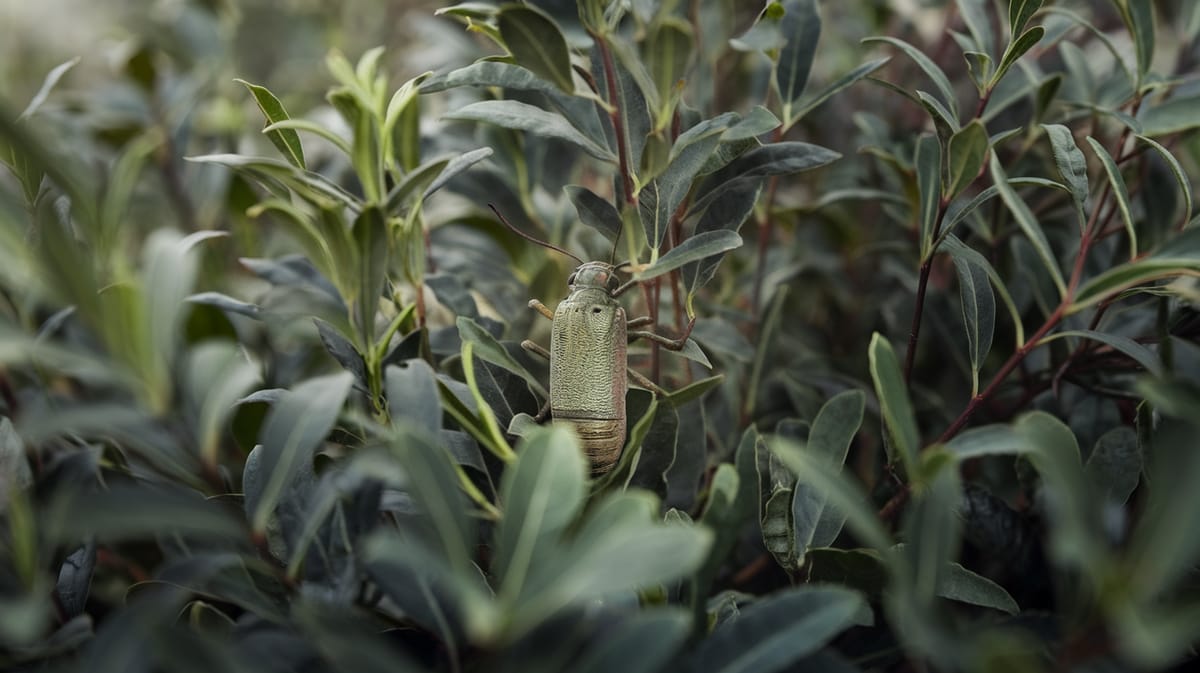Boxwood Borer
Boxwood Borer's intricate tunneling threatens boxwood shrubs with precision. This wood-boring beetle showcases nature's complex interaction between plant and insect.

Key Insights at a Glance
Did You Know?
Taxonomy & Classification
The Boxwood Borer, part of the vibrant Lepidoptera order, exhibits fascinating larval adaptations for feeding on boxwood plants, a hallmark of its evolutionary niche. Let's understand the evolutionary journey and classification of these remarkable herbivores.
Global Presence
The genus Cydalima, to which the Boxwood Borer belongs, is distributed across Asia and Europe, indicating a wide ecological adaptability.
Resilient Evolution
The Boxwood Borer has evolved specialized mechanisms to digest tough boxwood leaves, ensuring survival and propagation in diverse environments.
Lifecycle and Growth
A remarkable journey of transformation from Egg to Adult.
Egg
Female Boxwood Borers lay eggs in clusters on host plants, ensuring larvae have immediate access to food upon hatching.
Larva
Larvae bore into twigs and stems, causing damage while feeding, which is crucial for their growth and development.
Pupa
Enclosed in a cocoon, the pupa undergoes metamorphosis, transforming into an adult borer ready to emerge.
Adult
Adults emerge to mate and lay eggs, continuing the cycle while causing further damage to boxwood plants.
Dietary Habits
A larval leaf-feeder with specialized mouthparts, it targets boxwood shrubs, causing distinct damage by boring into leaves and stems.
| DIET TYPE | DESCRIPTION |
|---|---|
| Primary Diet | Primarily feeds on the leaves and stems of boxwood plants, causing significant damage to the shrubs. |
| Secondary Diet | Occasionally consumes other plant materials when boxwood is scarce, taking advantage of nearby foliage. |
| Occasional | Rarely feeds on alternative shrubs and ornamental plants under extreme conditions or when boxwood is unavailable. |

Behaviour and Adaptations
Discover the fascinating adaptations that enable the Boxwood Borer to thrive in its specific environment.
Wood Penetration
Efficiently bores into boxwood, causing significant plant damage.
Survival Camouflage
Blends into boxwood bark, evading predators effectively.
Nocturnal Activity
Primarily active at night to avoid daytime threats.
Ecosystem Impact
Exploring how the Boxwood Borer helps maintain ecological balance and sustainability.
Nutrient Recycler
Breaks down dead plant matter, enriching soil nutrients.
Biodiversity Supporter
Creates habitats for microorganisms and small predators within decaying wood.
Ecosystem Indicator
Indicates ecosystem health and changes through population fluctuations.
Conservation Challenges
Understanding and addressing the major threats to Boxwood Borer populations.
Habitat Destruction
Urbanization and landscaping reduce available habitats for Boxwood Borers.
Pesticide Use
Excessive pesticide application harms Boxwood Borers and disrupts ecosystems.
Climate Change
Temperature fluctuations affect Boxwood Borers' life cycles and distribution.
Frequently Asked Questions
How long do Boxwood Borer live?
Boxwood Borers typically live for about one year. Their lifecycle includes egg, larval, pupal, and adult stages, with the majority of their life spent as larvae feeding within the host plant.
What do Boxwood Borer eat?
Boxwood Borers primarily feed on the wood of boxwood plants. The larvae bore into the stems, causing damage as they tunnel through the plant, which can lead to dieback and reduced plant health.
Are Boxwood Borer poisonous?
Boxwood Borers are not poisonous to humans or animals. They are considered a pest due to the damage they cause to boxwood plants, but they do not pose a direct threat to human health.
Are Boxwood Borer endangered?
Boxwood Borers are not classified as endangered. They are common pests found in areas where boxwood plants are cultivated. Their populations are stable, largely due to the widespread availability of their host plants.
What do Boxwood Borer symbolize?
Boxwood Borers do not hold any significant symbolic meaning. They are primarily known for their role as pests in horticulture, particularly affecting the health and aesthetics of boxwood plants.
Do Boxwood Borer bite?
Boxwood Borers do not bite humans. They are focused on feeding on plant material, specifically the wood of boxwood plants. Their mouthparts are adapted for boring into plant tissues rather than biting animals or humans.
What color are Boxwood Borer?
Adult Boxwood Borers are typically brown with lighter markings, making them well-camouflaged on the bark of boxwood plants. The larvae, which are the damaging stage, are cream-colored with a darker head.
Does a Boxwood Borer have wings?
Yes, adult Boxwood Borers have wings. They are moths, and their wings allow them to fly and find new host plants. The wings are typically brown and help with camouflage among the plant foliage.
What does a Boxwood Borer look like?
Adult Boxwood Borers resemble small moths, with brown wings marked by lighter patterns. The larvae are cream-colored with a dark head, and they are the stage that bores into and damages the wood of boxwood plants.
Is a Boxwood Borer an insect?
Yes, a Boxwood Borer is an insect. It belongs to the order Lepidoptera, which includes moths and butterflies. As an insect, it undergoes complete metamorphosis, progressing through egg, larval, pupal, and adult stages.
Related Insects
Discover insects with similar characteristics to Boxwood Borer - including shared habitats, diets, and taxonomic classifications
Share this profile
Help others discover Boxwood Borer
